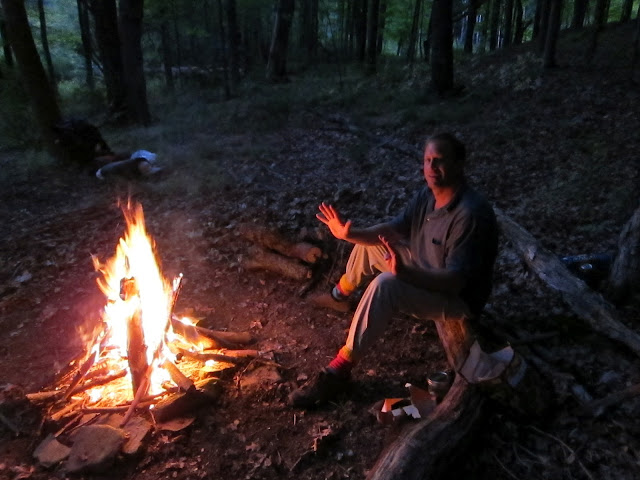However, it is an amazing place, with mature hemlock stands that are reminiscent of the Pacific Northwest, large oak trees, beautiful lakes (some made by beavers), and peace and quiet to boot. It definitely doesn't receive the attention it deserves from the locals, but that just makes it all the more special for those who take the time to explore it. We also found enough deer sign to warrant a return scouting trip sometime in the fall.
We did find one elderberry bush (Sambucus canadensis). Since this is my first experiment with elderberry and I only wanted a little bit of the fruit to determine if it's worth collecting in earnest, the one bush was enough to satisfy my foraging appetite. In fact, that one small bush yielded about 1.5 pounds of elderberries and only took a total of ten minutes to collect!
As always, be sure you can properly identify the plant. There are parts of the elderberry that cause some ill effects if consumed, and some varieties are said to be poisonous. In my region, the only poisonous look-a-like, according to the guidebook I use, is the red-fruited elder (Sambucus pubens). The two plants occupy slightly different habitats and there's enough variation between the two that I feel pretty confident my pickings came from S. canadensis.
The variety I picked prefers rich, moist soil on the margin of woodlands, fencerows, right-of-ways, and abandoned fields. We found our plant right in an open field about ten yards from the lake. Because there were so many fruiting berries on stem, it was rather difficult to pick the fruit singly. Instead, I cut the entire cluster off, placed it in my bucket, and plucked the fruit from the branch when I got home.
Although my friend enjoyed eating them straight from the plant, most people, including myself, find the taste a little too tart and the texture a little too seedy. So processing the berries into jam or a tart or something else is generally a must.
The fruits are ripe when they are black. I picked some that were still a little purple and I'm eager to find out if it affects the taste.
Although my friend enjoyed eating them straight from the plant, most people, including myself, find the taste a little too tart and the texture a little too seedy. So processing the berries into jam or a tart or something else is generally a must.
The fruits are ripe when they are black. I picked some that were still a little purple and I'm eager to find out if it affects the taste.
In my research, many sources noted the difficulty of stripping the fruit from the brackets. It took me about twenty minutes to strip 1.5 pounds of fruit from the brackets. I simply held the bracket in one hand and ran it through the other, stripping the majority of fruit in one swipe and then picking the rest off with my fingers. It doesn't get much easier than that. In fact, if you're not willing to put that much time into it, wild food gathering is probably not your thing. You'll hard pressed to find wild food that requires less prep time.
I haven't made anything from them yet, but I'm eyeing a pie recipe, jelly, and/or elderberry sauce. It appears some of the recipes calls for a food mill, which I don't have, but may soon.
Happy Big B-Day to Brett, who brought in his fortieth in robust fashion, cursing and slapping at mosquitoes while trying to get a good night's sleep.






No comments:
Post a Comment